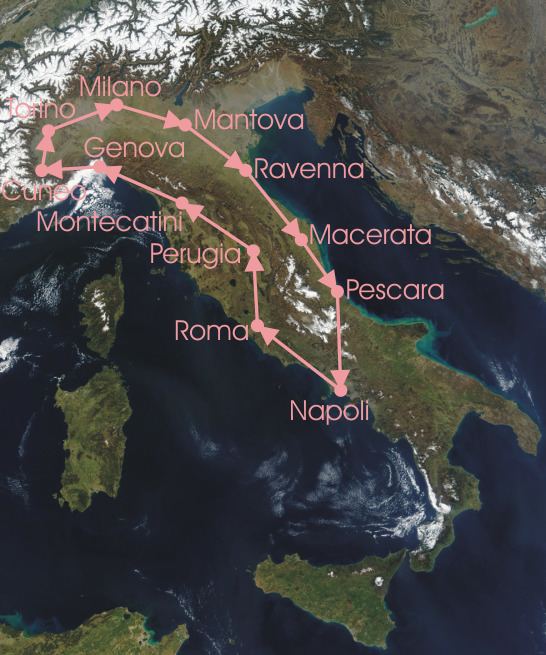Dates 10 – 30 May Distance 3,012 km (1,872 mi) | Stages 12 Winning time 102h 40' 46" | |
 | ||
Winner Francesco Camusso (ITA) | ||
The 1931 Giro d'Italia was the 19th edition of the Giro d'Italia, a cycling race organized and sponsored by the newspaper La Gazzetta dello Sport. The race began on 10 May in Milan with a stage that stretched 206 km (128 mi) to Mantua, finishing back in Milan on 31 May after a 263 km (163 mi) stage and a total distance covered of 3,012 km (1,872 mi). The race was won by the Francesco Camusso of the Gloria team. Second and third respectively were the Italian riders Luigi Giacobbe and Luigi Marchisio.
Contents
It was the first edition in which the leader used the Maglia rosa (pink jersey). The first cyclist to wear it was Learco Guerra.
Participants
Of the 109 riders that began the Giro d'Italia on 10 May, 65 of them made it to the finish in Milan on 31 May. Riders were allowed to ride on their own or as a member of a team. There were seven teams that competed in the race: Bianchi-Pirelli, Ganna-Dunlop, Gloria-Hutchinson, Legnano-Hutchinson, Maino-Clément, Touring-Pirelli, and Olympia-Spiga.
The peloton was primarily composed of Italians. The field featured three former Giro d'Italia champions in four-time winner Alfredo Binda, single-time winner Gaetano Belloni, and reigning champion Luigi Marchisio. Other notable Italian riders that started the race included Learco Guerra, Michele Mara, Felice Gremo, and Domenico Piemontesi. Frenchman Antonin Magne — who would go on to win the Tour de France twice — competed in the race, as well as future world champion, Belgian rider Jean Aerts. This race also saw the first Spanish riders compete with Mariano Cañardo and Ricardo Montero.
General classification
There were 65 cyclists who had completed all fifteen stages. For these cyclists, the times they had needed in each stage was added up for the general classification. The cyclist with the least accumulated time was the winner.
